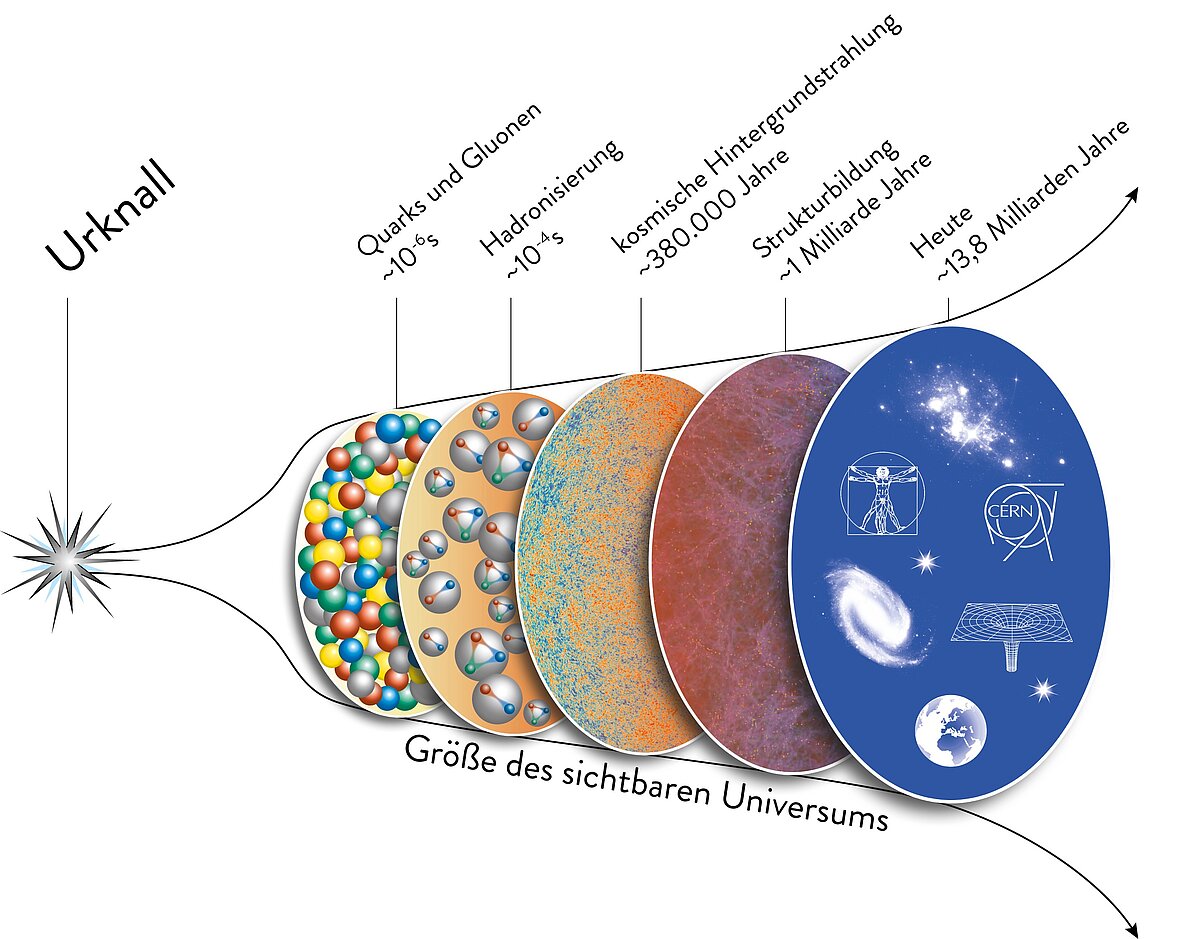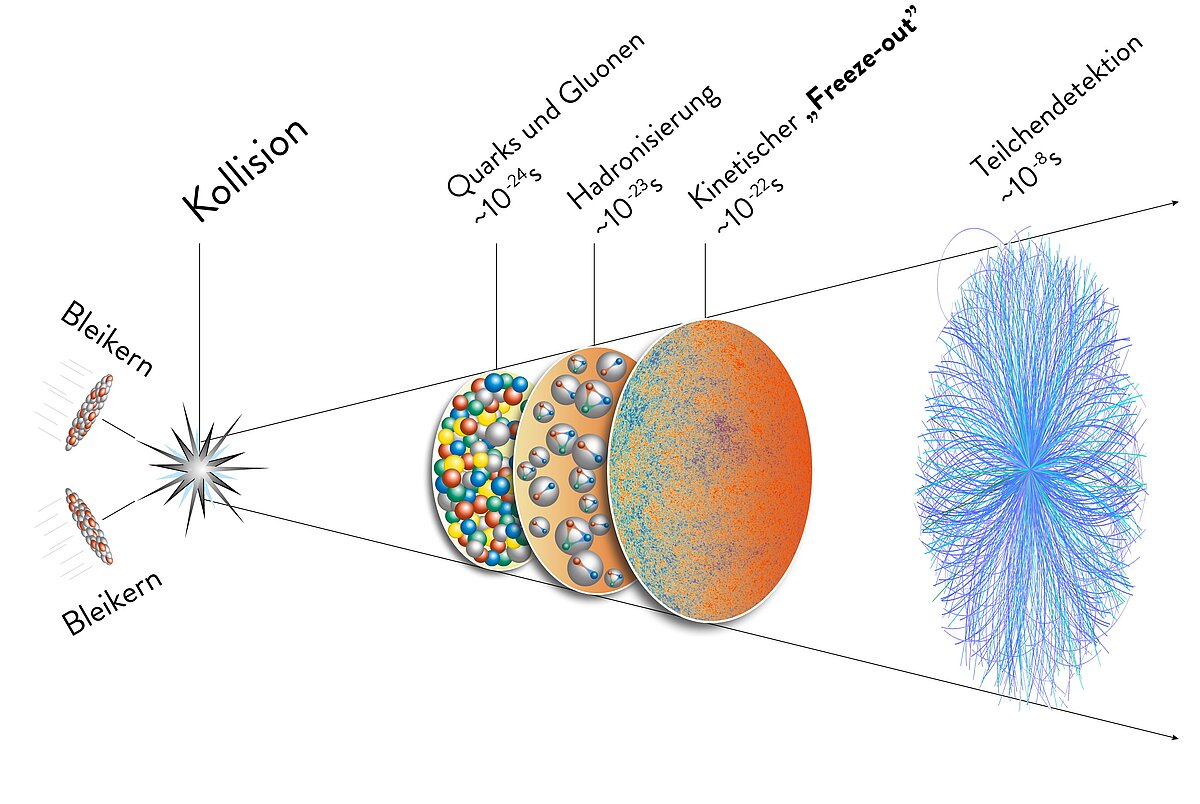
The ALICE experiment: exploring the early Universe
Nearly all the visible mass of the Universe is concentrated in atomic nuclei. These are comprised of protons and neutrons, and those, in turn, are made up of quarks and gluons. The so-called ‘strong force’ keeps quarks and gluons together so intensely that they can never be observed in isolation. However, this was not always the case. A few millionths of a second after the Big Bang the Universe was so hot that quarks and gluons could still move freely. This state of matter is called the ‘Quark-Gluon Plasma’ (QGP). The Universe then gradually cooled, allowing quarks and gluons to be bound in protons and neutrons in a process called ‘hadronisation’.

A mini-Big-Bang in the laboratory: colliding heavy ions
A very high energy collision of two heavy nuclei, such as lead ions, can lead to temperatures that are 100 000 larger than those in the center of the sun (1012oC). This roughly corresponds to the conditions immediately after the Big Bang. In order to investigate the creation and evolution of a QGP, immense detectors such as the ALICE apparatus are constructed at the Large Hadron Collider (LHC) at CERN.
The ALICE experimental setup
Installed at the LHC in one of the points in which beams intersect, the ALICE setup is made up of a solenoidal magnet and 17 detector systems that aim at detecting and identifying the many particles produced in heavy-ion collisions. Composed of approximately 2000 scientists and engineers collaborating towards a common goal, ALICE stands as one of the four largest collaborations at CERN.
Here you can watch the video:
Each Pb-Pb collision produces up to 3000 charged particles in the main detection region of the ALICE experiment. It is up to the detectors to deal with collisions that happen at a rate of 50000 per second. The huge data volume generated in these measurements is processed with high-capacity computing infrastructure and subsequently saved for analysis. It is the analysis of this data that allows the ALICE collaboration to answer fundamental questions about heavy-ion collisions, hadronisation and the strong force.